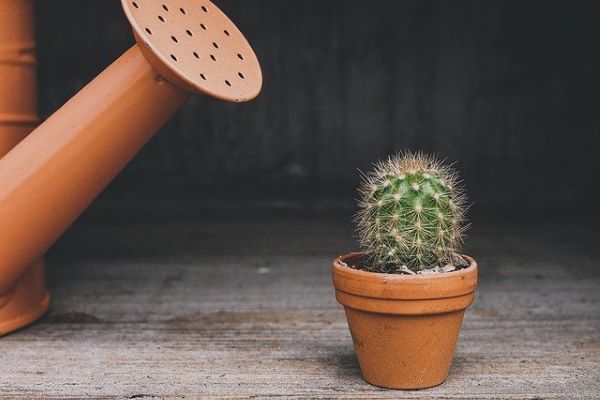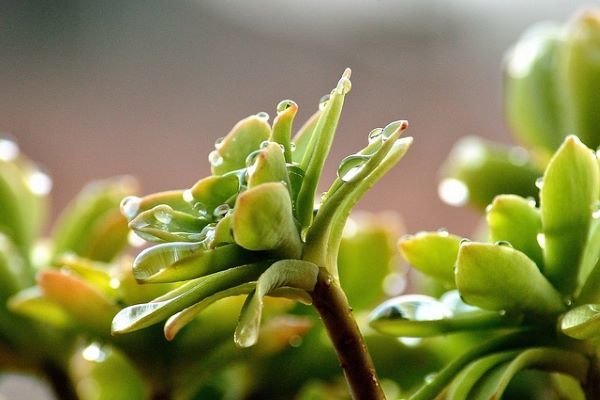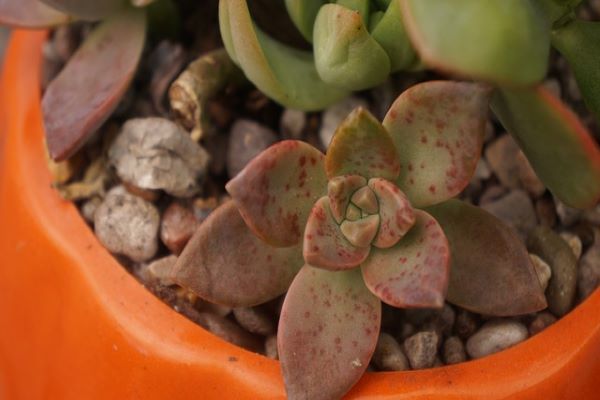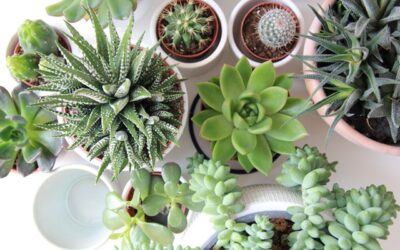Everyone knows that succulents are very hardy, and don’t need a lot of water to survive. Although this may make it seem far easier to care for succulents, it can actually make it harder!
Many people don’t know how often to water succulents and this can result in unhealthy or even dying plants. Luckily, MrSucculents has got you back. In this post, we answer the question of how often you should water succulents, as well as help you with watering correctly.
In short – The generalized answer
When growing, succulents should be watered somewhere between once every 5 to 10 days. Succulents grow from spring to summer, and generally stop growing sometime in the mid to late fall. Between fall and spring, only water your succulents when the ground is very dry. They need very little water during this resting phase, and this is the time when many succulent growers overdo it.

How often you should really water your succulents
Now, general information isn’t always very helpful since every type of succulent is different when it comes to watering. We always advise people to check out the care guides on our site to make sure you’re following a watering schedule that’s tailored to your plant. That being said, there are a few important watering rules you can follow to ensure your giving your succulent the right amount of water when they need it.
Watering 101 – the basics
Below are some of the most important rules to follow when watering your succulents. Make sure you follow them when possible, but also check out the specific watering requirements for your plant so you can make any adjustments as needed.
Water only when soil is dry
Always check to see whether the top few inches of the soil is dry before watering. If your plant is in both an inner and an outer pot, lift up the inner pot to make sure there’s no water left underneath.
Remove old water
If there is old water in the outer pot, empty the outer pot and wait to water the plant for at least one day (if the top few inches of the soil is dry) or longer if the soil is still wet.
Water less & less often in the winter
Your succulents go into a rest period around mid-late fall. Water your succulents very scarcely, only to prevent them from showing signs of dehydration. When you do water the plant, don’t drown it in water either. Water sparingly to prevent root rot. (this doesn’t include succulents that grow in the winter. Always research your succulents before following these rules!)
Clean tap water
Leave tap water to acclimatise for an hour or so before giving it to your plants. This way, the water is the same temperature as the room and the chlorine has had time to evaporate.
Add fertilizer sparingly
Don’t flood the plant with fertilizer, especially in the months it doesn’t grow as much. Fertilize sparingly for the best results.
Why is watering such an important subject?
Watering is a subject that can be very confusing to new succulent owners. We often want to find a one-size-fits-all solution to problems we encounter, but when caring for plants, this just doesn’t work. Always check to see what the care requirements are for the particular succulents that you’re growing. This helps to alleviate any confusion there might be.
The main reason why watering can get very confusing is that overwatering and underwatering can both cause the same symptoms in plants. This can mean that you are making the problem a lot worse when you think you’re making it better. If your plants are displaying symptoms of overwatering or underwatering, then read on to discover what you can do about it!

My plants are showing symptoms of overwatering/underwatering, what should Id do?
To make it easier for you, we’re going to follow a checklist to give you the best chance of taking the right actions in treating the symptoms your plant is showing. Both overwatering and underwatering can cause the same symptoms, and this is what makes watering such a complicated topic for growers. If the leaves are shriveling, then the plant is most likely underwatered, whereas if the leaves are mushy it’s probably overwatered. However, this isn’t as easy to tell for all succulent varieties though.
Here are the steps you can take to find out what’s really going on with your plant:
Check the soil
The first thing you should do is check the soil. Check if it’s completely dry up to a few inches deep. If it is and it has been a while since you’ve watered the plant (or it’s in a very hot place where water evaporates quickly), then it’s probably dehydrated.
Tip
Make sure to smell the soil too. Root rot can cause the soil to smell bad, which is a telltale sign that your succulent has been receiving too much water.
Are the leaves wrinkly or mushy?
Mushy leaves and wet soil is a sign of overwatering. Dry soil and wrinkly leaves are a sign of underwatering.
Situation check
Check when you last watered your succulent, whether it’s positioned in a hot or cold place, what time of year it is and whether it’s a winter or summer grower. This ifo will help you to diagnose the problem.
What to do now
Once you know what’s causing the symptoms, it’s quite easy to take the right actions to treat them. If your plant has been overwatered, stop watering until the soil has completely dried out for a day or two. This will prevent root rot and allow the plant to use up any excess water. Once you do start watering again, water sparingly until the plant is fully recovered, then get them back on a normal watering cycle (NORMAL, so not going back to drowning the poor things ;).
If underwatering was causing the issue, start watering a little more often (don’t overdo it) and give your succulent plenty of water now. Be careful not to overdo it and up the watering so much that you start overwatering.
Leaves turning yellow or brown? – Check out our post on yellowing and browning leaves so you can treat the issue accordingly. There may be other issues that aren’t directly related to watering at play.

Conclusion
How often to water your succulents can be a tricky predicament. If they could handle it, we’d ideally love to water them and care or them every day, but that’s not what’s best for the plant. By keeping a finger on the pulse and staying on top of the watering, you can prevent any overwatering or underwatering issues from occurring. Hopefully, this guide has given you all the information you need, but if you have any questions, please leave them in the comments below. This way, other people can benefit from the answers too!


0 Comments
Trackbacks/Pingbacks